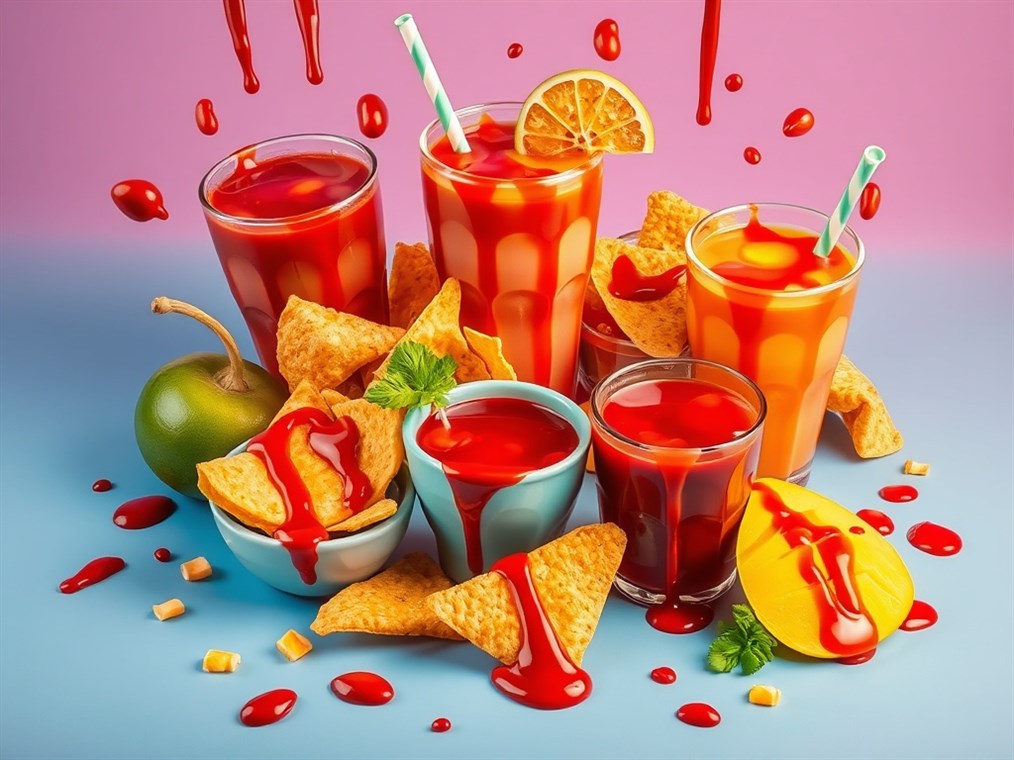Chamoy: Is This Mexican Flavor Bomb Vegan-Friendly?
Okay, so you’re digging into the vibrant world of Mexican snacks and treats, and you’ve stumbled upon chamoy. This stuff is seriously addictive – a wild ride of sweet, salty, spicy, and sour all at once. You can find it drizzled on mangoes, used as a dip for chips, or even swirling around in drinks. But if you’re vegan, you’re probably wondering: “Hold on, can I even eat this?” Let’s get down to it.
Here’s the deal: chamoy, in its purest form, is often totally vegan. We’re talking about a simple mix of pickled fruit, chili peppers for that kick, a little salt and sugar to balance things out, and a good squeeze of lime. Sounds pretty plant-based, right? And you’d be right! Most of the time, you’re in the clear because it usually doesn’t have any sneaky animal products hiding in there.
Think of it like this:
- The Base: Dried fruits like apricots, plums, maybe even some mangoes. Yum!
- The Heat: Chili peppers, because what’s chamoy without a little fire?
- The Zing: Lime juice to make your taste buds dance.
- The Sweet & Savory: Sugar and salt, the dynamic duo of flavor.
But, and this is a big but, you can’t just grab any bottle off the shelf and assume you’re good to go. Some store-bought versions can be a bit… tricky. That’s where those sneaky additives come in.
So, what should you watch out for?
- Artificial Colors: Red No. 40 is a common culprit. Some vegans avoid it because it’s sometimes tested on animals.
- Mystery Preservatives: Not always a problem, but worth a quick glance.
- Umeboshi Plums: This is a deep cut. Some chamoy recipes have roots in Asian cuisine and might use these plums. The plums themselves are vegan, but double-check how they were processed.
Alright, so how do you make sure your chamoy adventure stays vegan? Easy peasy:
- Become a Label Detective: Seriously, read those ingredients like your taste buds depend on it.
- DIY is Your Friend: Making chamoy at home is surprisingly simple, and you get to control everything that goes in.
- Seek Out the “V” Label: Some brands are hip to the vegan thing and will proudly label their chamoy as such.
Now, a little backstory. Chamoy’s origin story is a bit of a delicious mystery. Some say it evolved from Chinese “Li Hing Mui” – those dried, sour plums that pack a punch. Others whisper tales of Filipino immigrants or Chinese workers in Hawaii bringing similar flavors to Mexico. There’s even a story about a Japanese immigrant in Mexico making umeboshi plums and calling them “chamoy.” Whatever the real story, it exploded in popularity in the ’60s and ’70s and has been a Mexican snack staple ever since.
These days, chamoy is everywhere. I’ve seen it on everything from fresh fruit skewers at street fairs to fancy cocktails in trendy bars. You can find it as a sauce, a powder, even as a candy. And the innovation keeps coming! Some brands are even making sugar-free versions with monk fruit for those watching their sugar intake.
So, the bottom line? Chamoy can be a vegan’s best friend, but you’ve got to be a smart shopper. Read those labels, get creative in the kitchen, and happy snacking!

